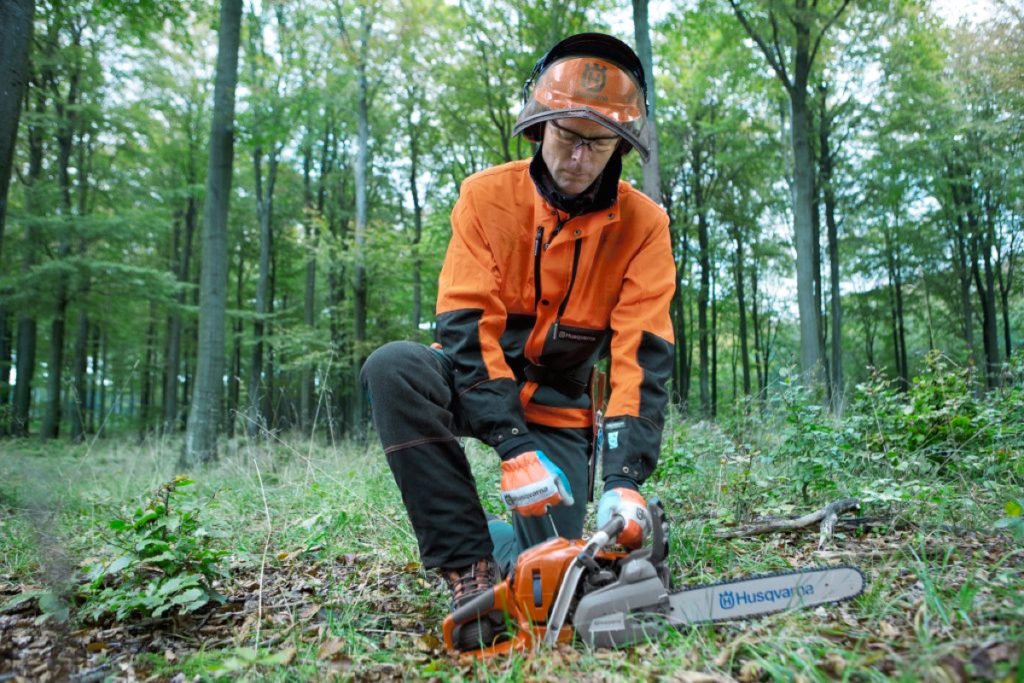Chainsaw Safety Training

Chainsaw Safety Training to Prevent Injuries
Chainsaws are powerful and indispensable tools in various industries, from forestry and landscaping to construction and emergency response. With their ability to quickly cut through wood, they facilitate efficient tree felling, branch trimming, and debris clearing tasks. However, the inherent risks associated with chainsaw operation make comprehensive training essential for workers who handle these powerful machines. In this article, we delve into the importance of chainsaw training in preventing injuries and safeguarding workers in the logging industry and beyond.
- Understanding the Risks: Chainsaws pose significant risks to workers due to their sharp blades, high-speed rotation, and potential kickback. Without proper training, operators may inadvertently expose themselves to hazards such as cuts, lacerations, amputations, and even fatalities. Chainsaw training programs educate workers about the potential risks associated with chainsaw operation and emphasize the importance of following safety protocols to mitigate these risks effectively.
- Learning Proper Handling Techniques: Chainsaw safety training provides workers with the knowledge and skills necessary to handle chainsaws safely and efficiently. Participants learn how to properly grip, control, and maneuver the chainsaw to minimize the risk of accidents and injuries. Techniques for starting and stopping the chainsaw, adjusting chain tension, and maintaining balance while cutting are also covered in training programs, ensuring that operators can operate the chainsaw with confidence and precision.
- Recognizing and Mitigating Hazards: Chainsaw operators must be able to identify potential hazards in their work environment and take appropriate measures to mitigate them. Training programs teach workers to recognize hazards such as unstable trees, overhead power lines, uneven terrain, and entanglement hazards. By understanding how to assess risks and implement control measures, operators can minimize the likelihood of accidents and create a safer work environment for themselves and their colleagues.
- Preventing Kickback Incidents: Kickback, a sudden and violent upward movement of the chainsaw, is one of the most common causes of chainsaw-related injuries. Training programs educate operators about the factors that contribute to kickback, such as improper cutting techniques, chain binding, and contact with solid objects. Participants learn how to position themselves safely, maintain control of the chainsaw, and avoid situations that could lead to kickback incidents, reducing the risk of serious injuries.
- Understanding Maintenance and Inspection Procedures: Regular maintenance and inspection of chainsaws are essential for ensuring safe and reliable operation. Chainsaw training programs cover basic maintenance tasks such as chain sharpening, lubrication, and filter cleaning, as well as more advanced procedures like engine tuning and component replacement. By understanding how to properly maintain and inspect their chainsaws, operators can identify potential issues early on and prevent equipment failures that could result in accidents or injuries.
- Emergency Response and First Aid: Despite preventive measures, accidents may still occur during chainsaw operation. Chainsaw training programs include instruction on emergency response procedures and first aid techniques for chainsaw-related injuries. Participants learn how to respond quickly and effectively to accidents such as cuts, amputations, and lacerations, applying first aid measures to stabilize the injured person until professional medical help arrives. By being prepared to handle emergencies, workers can minimize the severity of injuries and improve outcomes for themselves and their colleagues.
- Compliance with Regulations: In many jurisdictions, employers are required by law to provide chainsaw training to workers who operate chainsaws as part of their job duties. Failure to comply with these regulations can result in fines, penalties, and legal liabilities for employers. Chainsaw training programs ensure that employers meet their legal obligations and demonstrate a commitment to workplace safety, protecting both workers and the organization from potential legal consequences.
Chainsaw safety training is indispensable for workers in the logging industry and other sectors where chainsaws are utilized. By understanding the risks, learning proper handling techniques, recognizing and mitigating hazards, preventing kickback incidents, understanding maintenance procedures, preparing for emergencies, and complying with regulations, chainsaw operators can minimize the likelihood of accidents and injuries in the workplace. Investing in comprehensive chainsaw training programs not only protects workers’ safety and well-being but also contributes to a culture of safety and professionalism in the industry.
Categories
- Aerial Lift
- ATV Training
- Bear Awareness
- Chainsaw Training
- Confined Space
- Defensive Driving
- Forklift Training
- Lockout Tagout
- Online Safety Training
- Overhead Crane
- Pipeline Construction Safety Training
- Propane Handling
- Safety Training Benefits
- Scissor Lift
- Skid Steer Training
- Space Awareness
- TDG
- Telehandler Forklift
- Traffic Control
- Train the Trainer course
- Training Course
- Uncategorized
- WHMIS
- Workplace Harassment and Violence Preventiont
